ALLIGATOR
BEHAVIOR page 4d: FEEDING page 4 page 1 2 3 5 6 7 8 9 10 11
This page was born 07/05/2008. Rickubis designed
it. (such as it is.) Last update: 01/29/2025
Images and contents on this
page copyright ©2001-2025 Richard M. Dashnau
Most people have seen programs on television showing
crocodiles attacking large animals like deer and cattle. While
this is amazing, and sometimes horrifying, those creatures
are not alligators. The function of a crocodile's
dentition is somewhat different than an alligator's. Alligators
favor prey items that will fit inside their head. That is, if they
can
swallow it whole, then they will normally attack it. While I've
heard witnesses tell of alligators taking deer in the park, the
prey was very small fawns. Alligators have also been
seen with large nutria. But, most of the time, they will eat
things like small fish, frogs, and crayfish. Snakes and turtles
are also pursued, with alligators seeming to be especially
well-adapted for eating turtles. A recent study done in Texas
examined the stomach contents of about 50 alligators (which were
unharmed). Research showed that only one of
these alligators had eaten a bird (which couldn't be identified,
it might have already been carrion when taken), and the rest had
stomach full of small fish and shellfish. I've seen
11-foot alligators going after
prey that was no larger than their largest teeth (very small frogs
and fish).
6/24/2007--(added
12/11/2016) I was walking along the
Spillway Trail when I noticed an alligator chewing on something.
Since I couldn't see any fur, and the carcass had legs, I
assumed that the alligator was eating the carcass of a smaller
alligator. On further examination through binoculars, I
discovered that the carcass was actually that of a very
large
softshell turtle. The alligator had somehow eaten out the
center of the turtle's carcass. This left a "ring" of shell and
flesh, and this ring was wrapped around the alligator's lower
jaw. When the alligator tried to swallow the carcass, only part of
it could go in. I watched the alligator struggle with the carcass
until I had to leave to work elsewhere in the park.
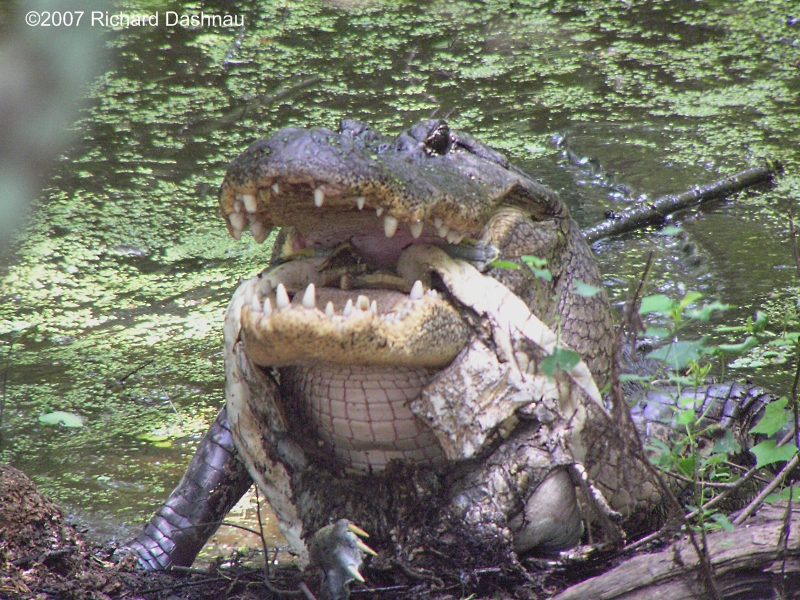 -
-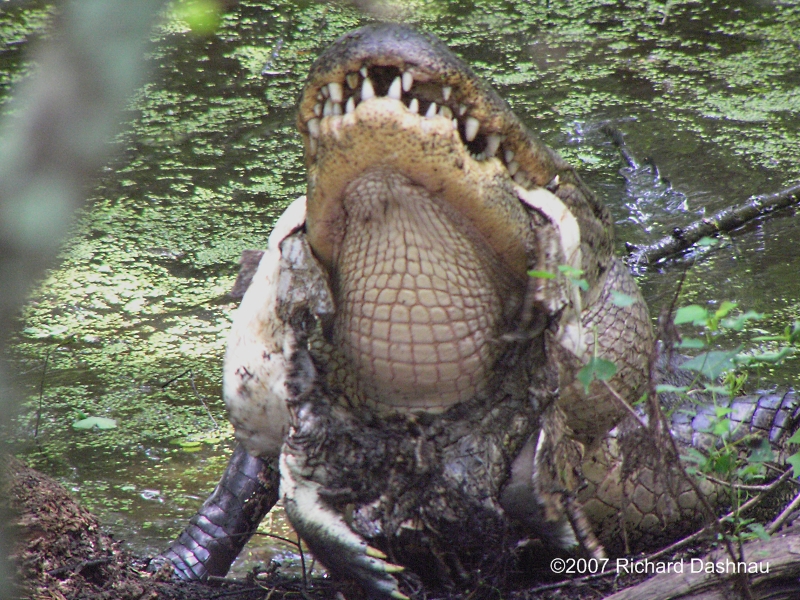 -
-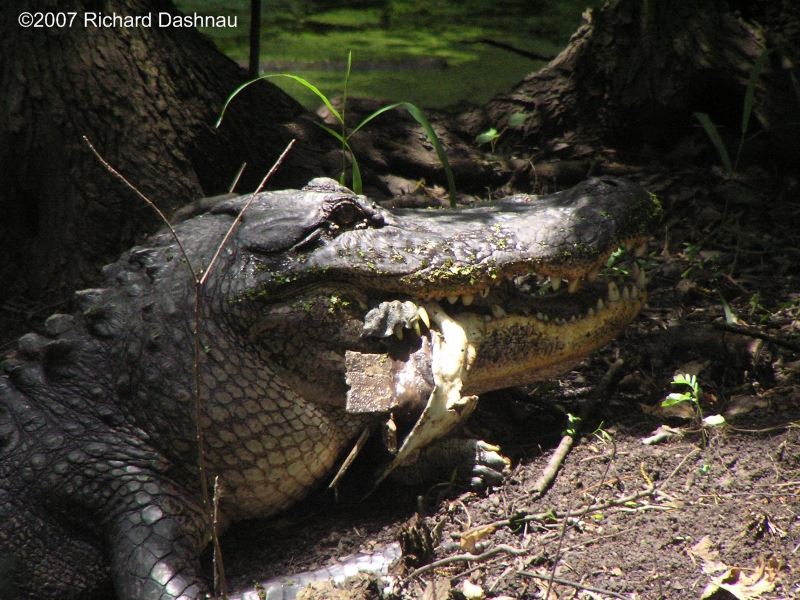 -
-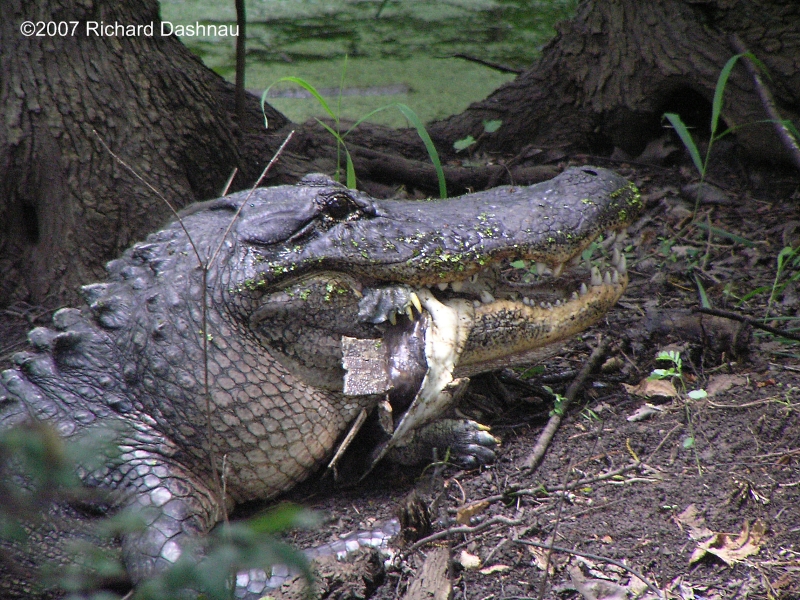 -
-
 -
- --
--
5/27/2007--
(added to this page from old material 6/13/2019)I
was near the Observation Tower at 40 Acre lake, when I heard a
splash somewhere in front of me, hidden
by the plants in Pilant
Lake. About 10 minutes later (at 10:21) an alligator
surfaced right in front of me. It swam to the edge of the lake,
and when it left the water I could
see that it had a large
nutria in its mouth. It immediately started chewing on the
carcass, and tried to swallow it. The nutria only went down
part-way, and the alligator spit
out most of it and held
it in its jaws. After a few minutes it crushed and tossed the
nutria, then rested. About 30 minutes after the alligator
appeared, it began working hard
on the carcass and chewed
on it with only short rests of a few minutes. 16 minutes
later, the alligator had gotten the nutria carcass all the way
into its mouth, and mostly down its
throat. This seemed
odd, since the alligator made no attempt to shake the carcass
apart before swallowing it. The photos below were taken at
various intervals during the time
that I watched the
alligator. This video shows the final processing of the
nutria carcass as it's almost completely swallowed. The last two
images show how the alligator
tilted its head down at
an angle to the neck--apparently to help push the carcass into its
stomach.
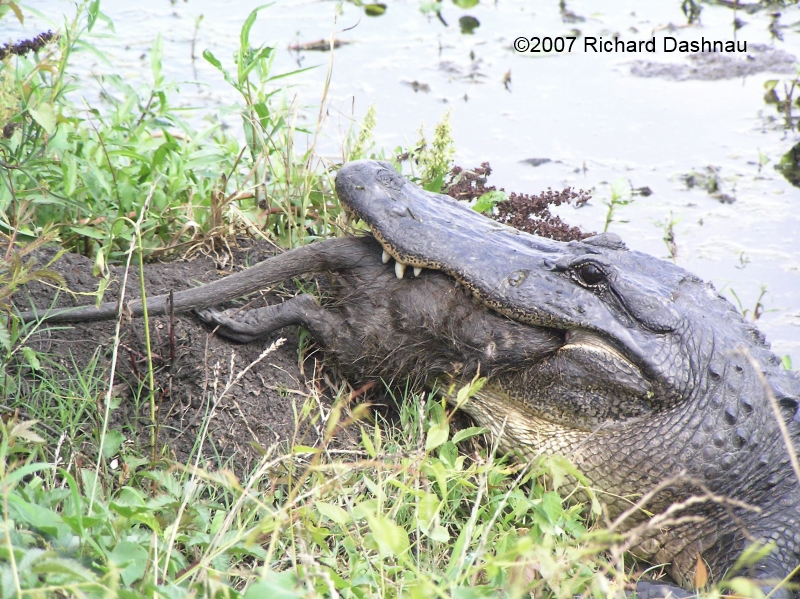 -
-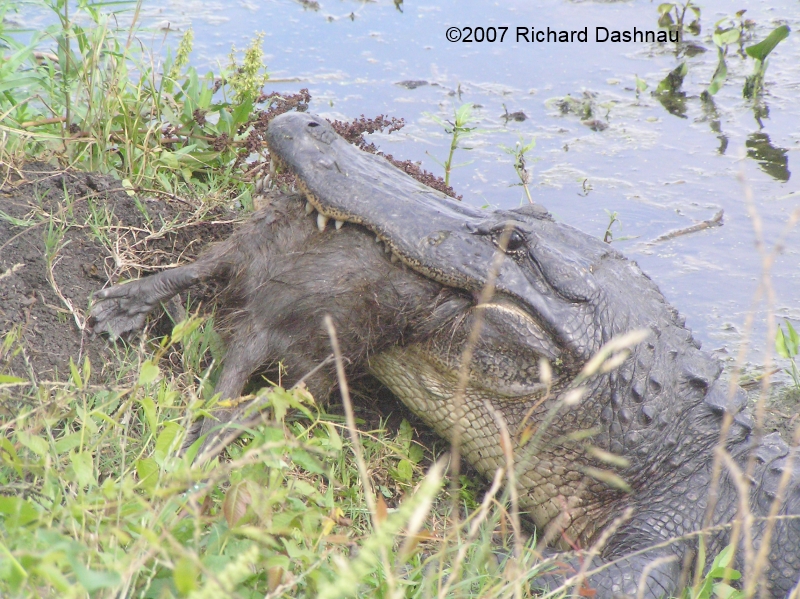 -
-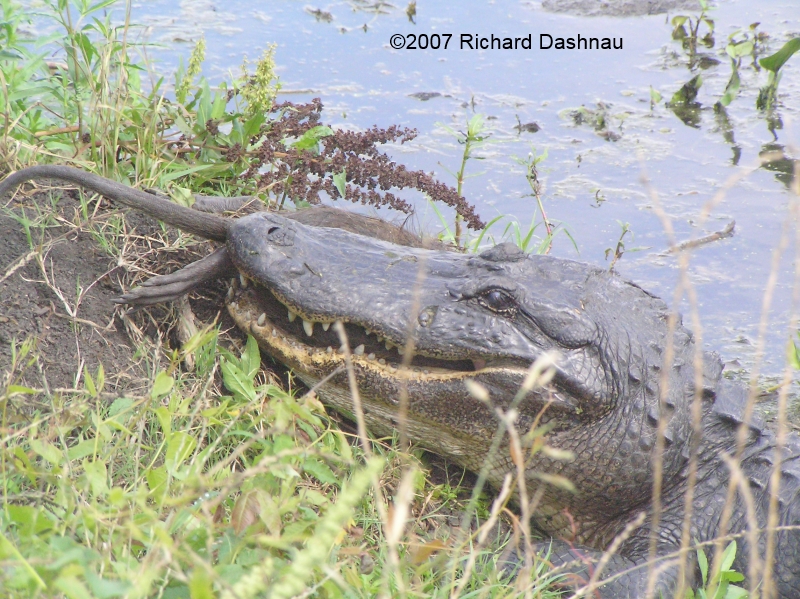 -
-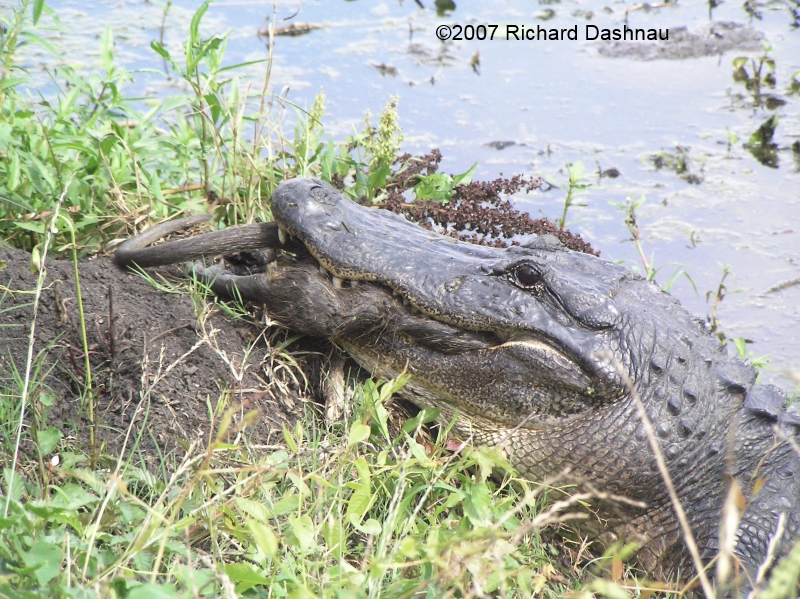 -
-
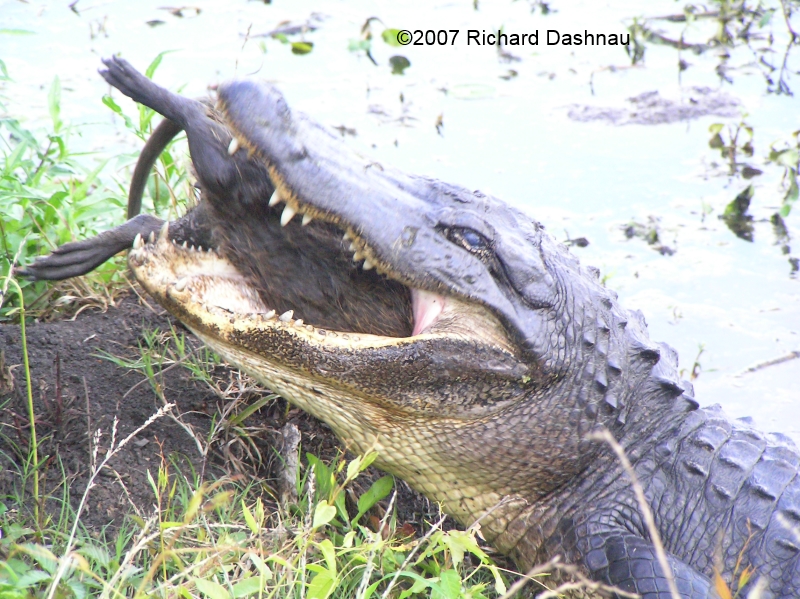 -
-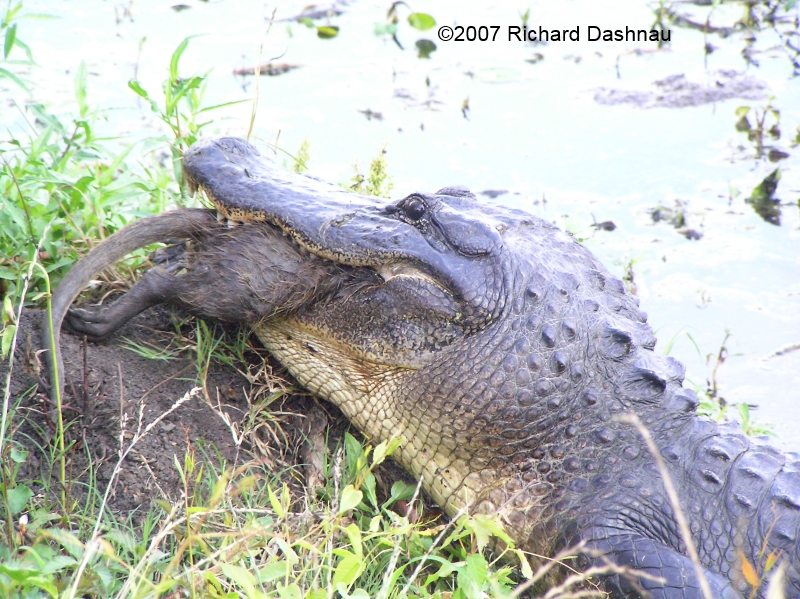 -
-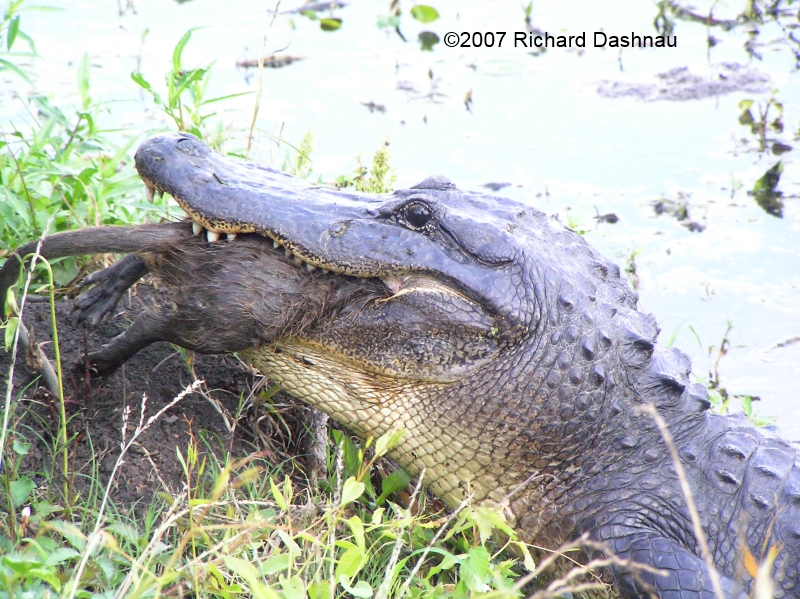 -
-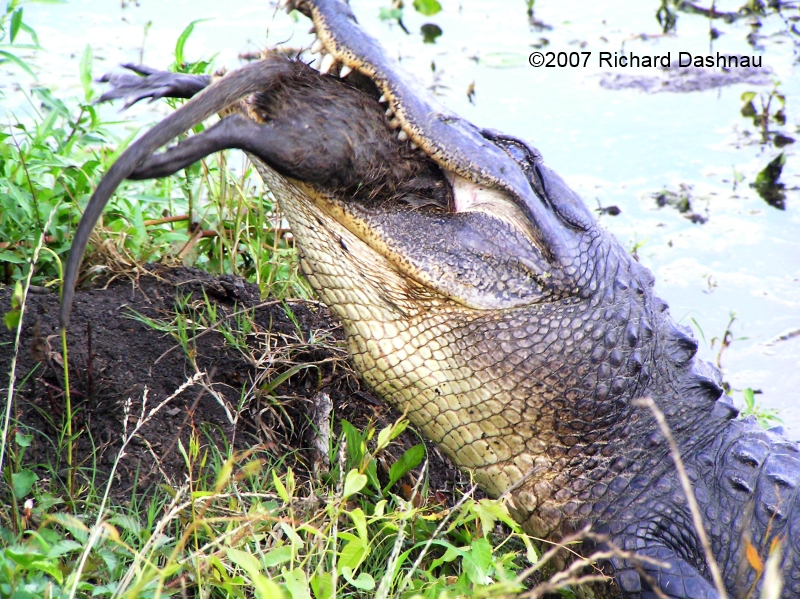 -
-
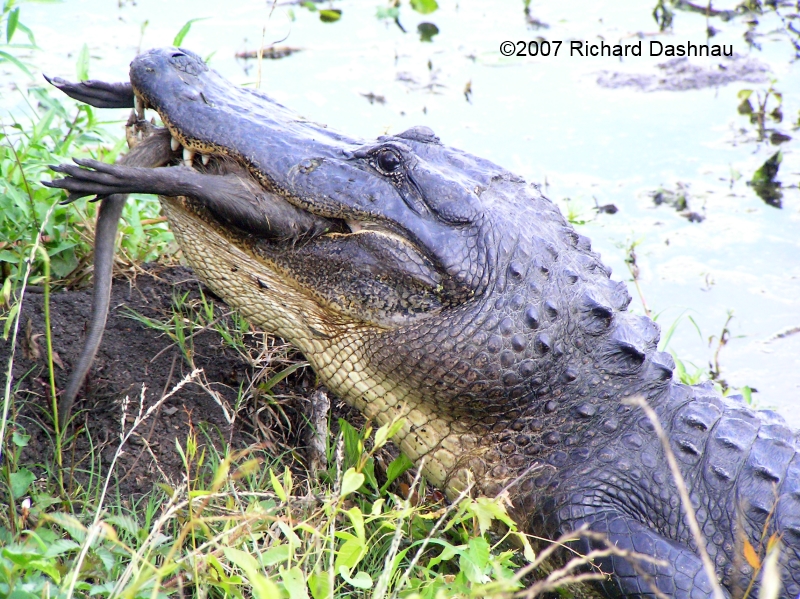 -
-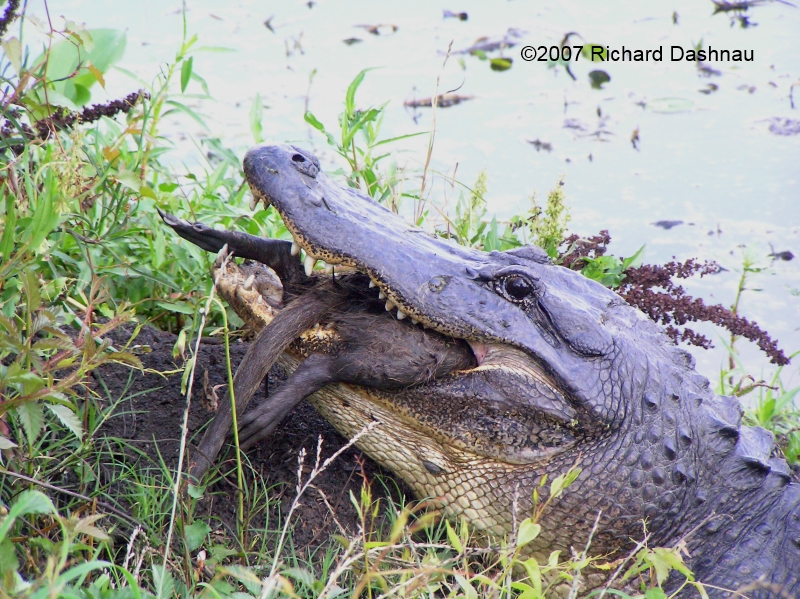 -
-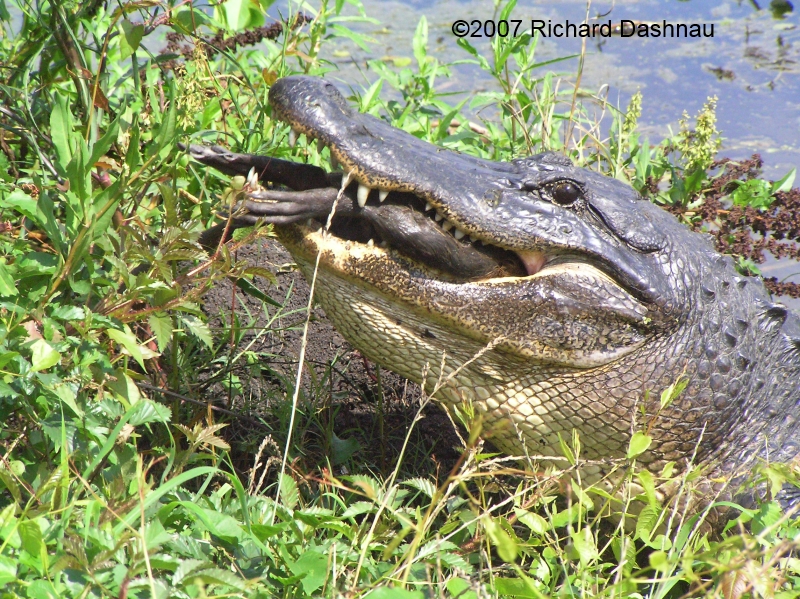 -
-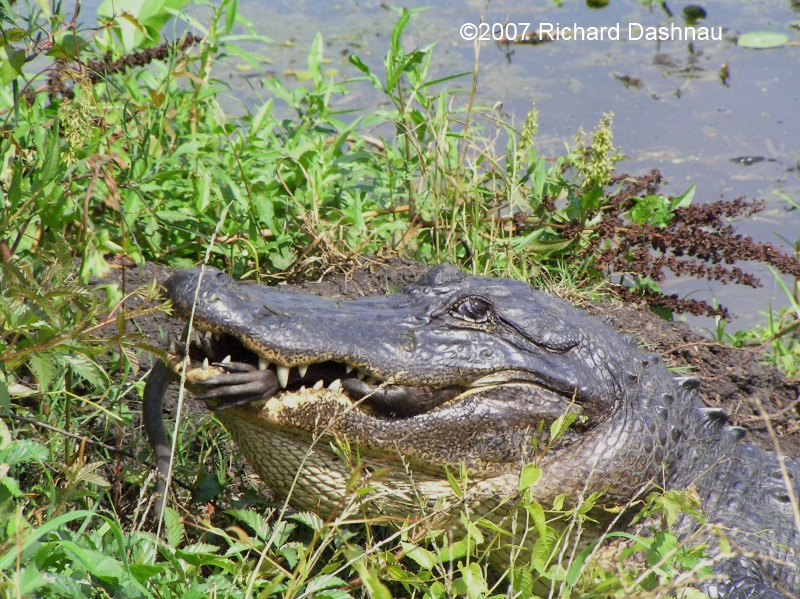 -
-
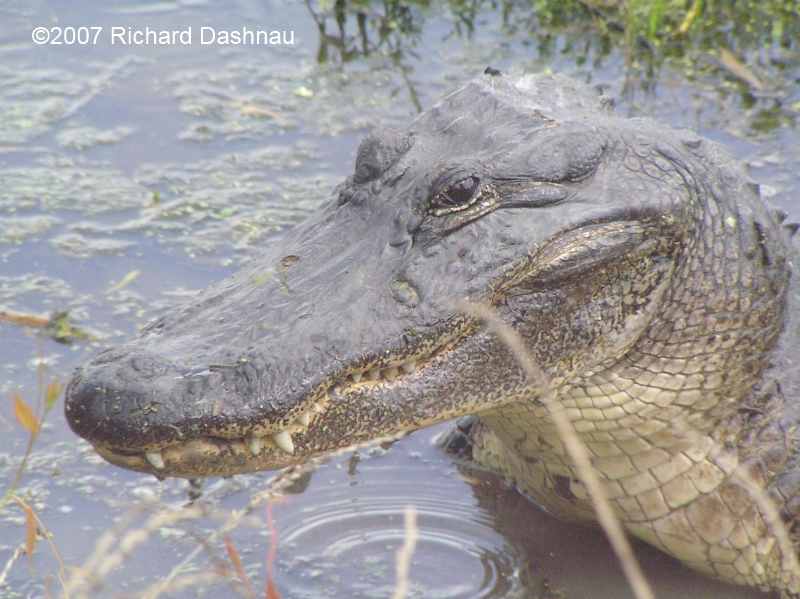 -
-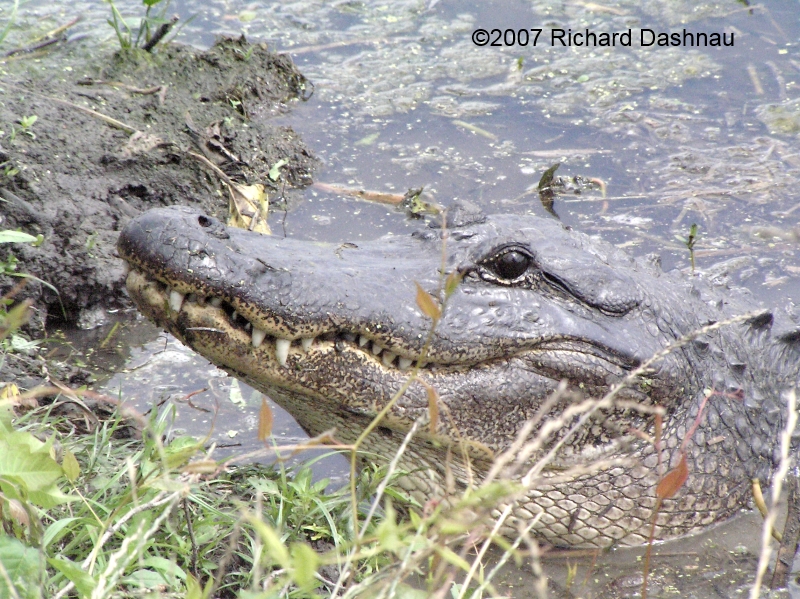 --
--
2/18/2007-- (added to this page
from old material 1/26/2022) Sunday
was a beautiful day. I made my way to new horseshoe lake where I
found an medium alligator (about 9' long)
on the back side (past
the bench) with some kind of mammal in its jaws. The fur was kind
of coarse, and the animal seemed sort of long. I spent a little
over four hours watching and
waiting for the alligator
to move the carcass enough to let me see what it was. Considering
how cold it's been during the evenings, it's surprising that an
alligator is eating anything,
including something this
large. I don't think there's any way to tell what happened, or
even how old the carcass is. The alligator could have found it.
The alligator could have killed it.
With weather conditions
as they've been, it's concievable that the carcass could be many
days old, with the equivalant of being placed in a refrigerator
every evening.
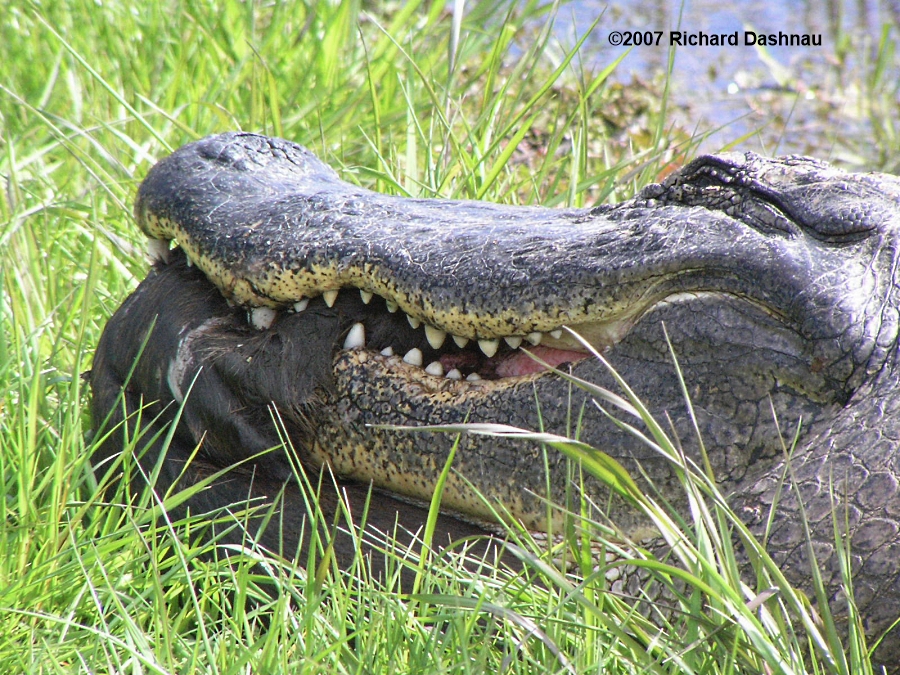 -
-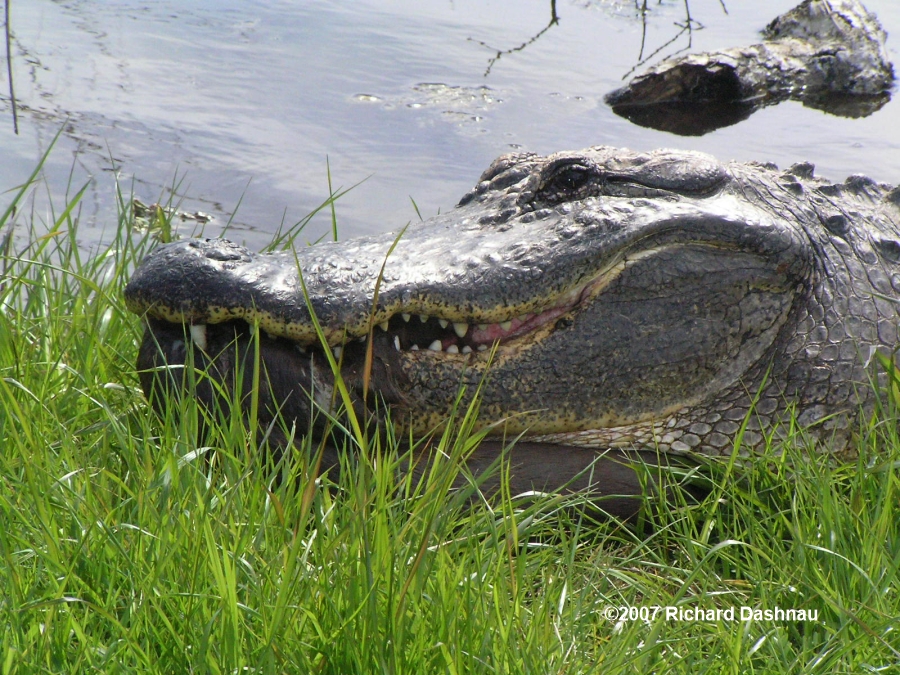 -
-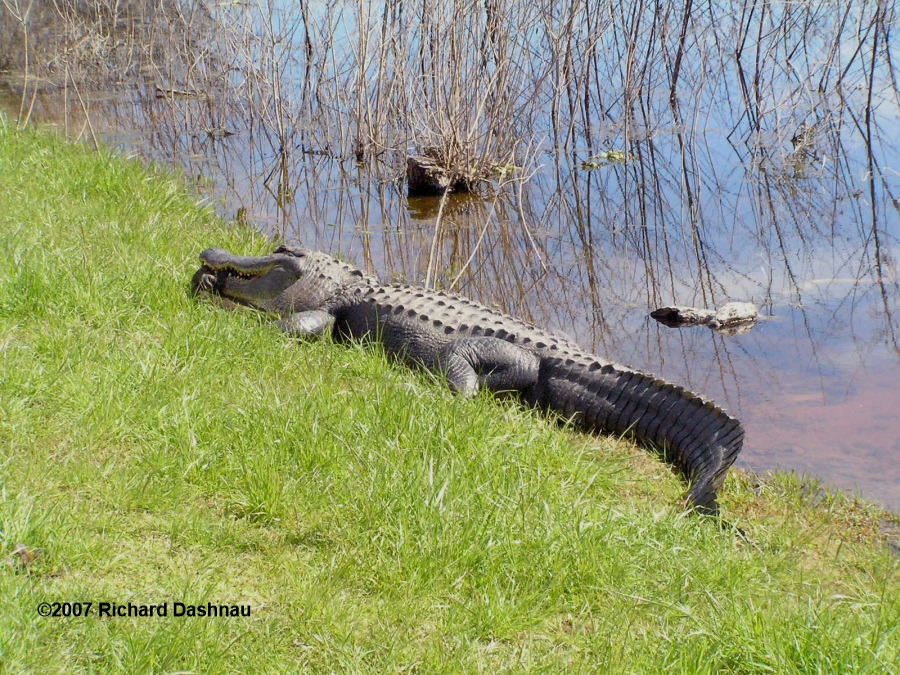 -
-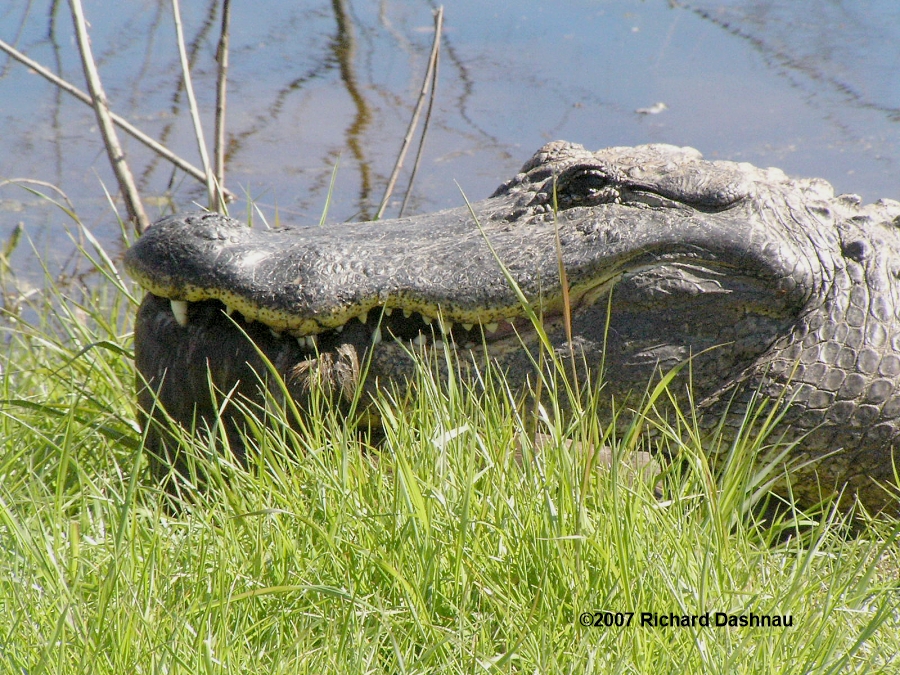 -
-
During all that time, I
got a chance to interpret for many park visitors. Sometime in the
mid afternoon, as I was describing what I thought the furred
creature probably was (a
nutria)
and what I hoped it wasn't (an otter), a couple
park visitors nearly knocked me out with this set of statements:
"An otter? We just saw one."
And I asked where. And
they told me. It was down on the Spillway trail, on the island
which I propose be christened "Otter Island". Of course, I gave my
usual congratulations and
explained that that's a
rare event. Later, some other
visitors also reported seeing the otter, and a few stated that it
was just lying around on the island. I just had to get out there!
But I couldn't leave. I
hadn't found out what the alligator was holding yet.
Finally, the alligator
moved forward one more time. In over 4 hours, it moved its feet a
few times, lifted its head and grunted thrice in a row, slid
forward about one foot, then shifted
forward again about
a foot. That's it. Well, unless you count opening and closing its
eyes. Through my binoculars, I saw a broad, flat,
"scaly" tail. The dead mammal was a beaver,
and
the alligator had
it by the head. After the last few visitors cleared out, I
hustled over to look for the Otter. And the story continues on my
otter page.
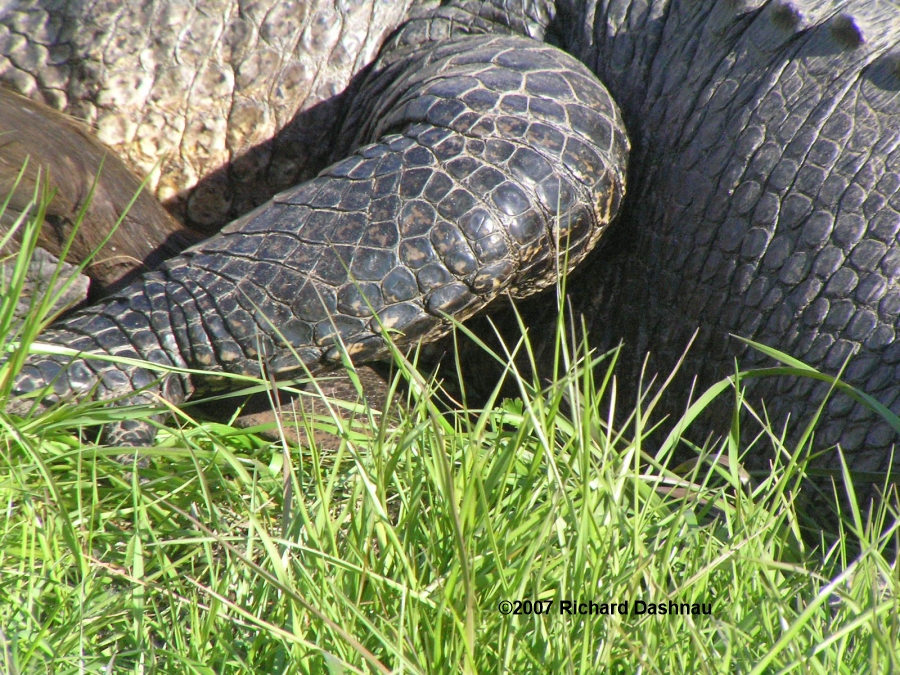 -
-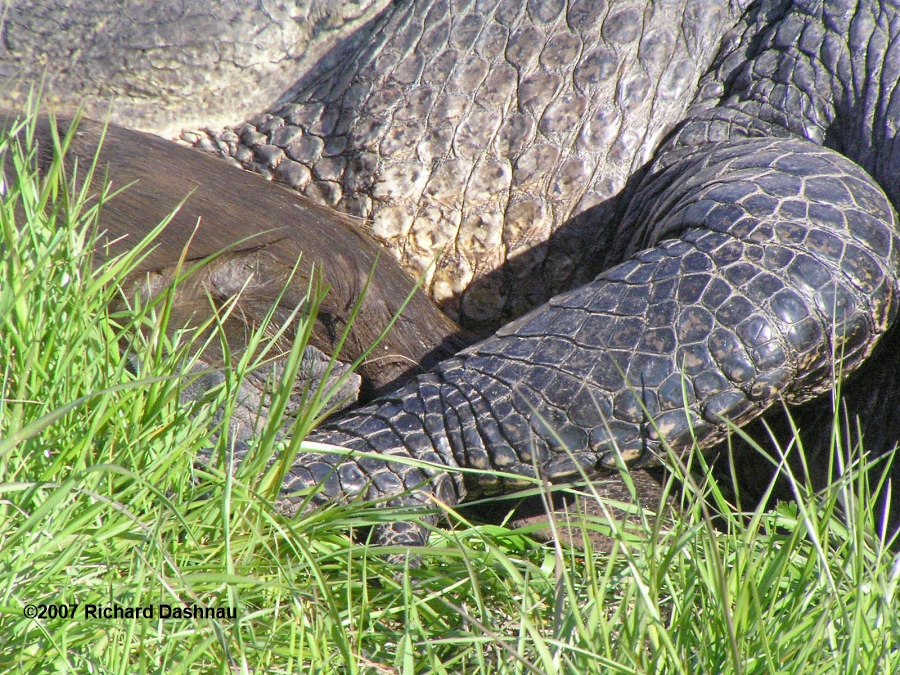 -
-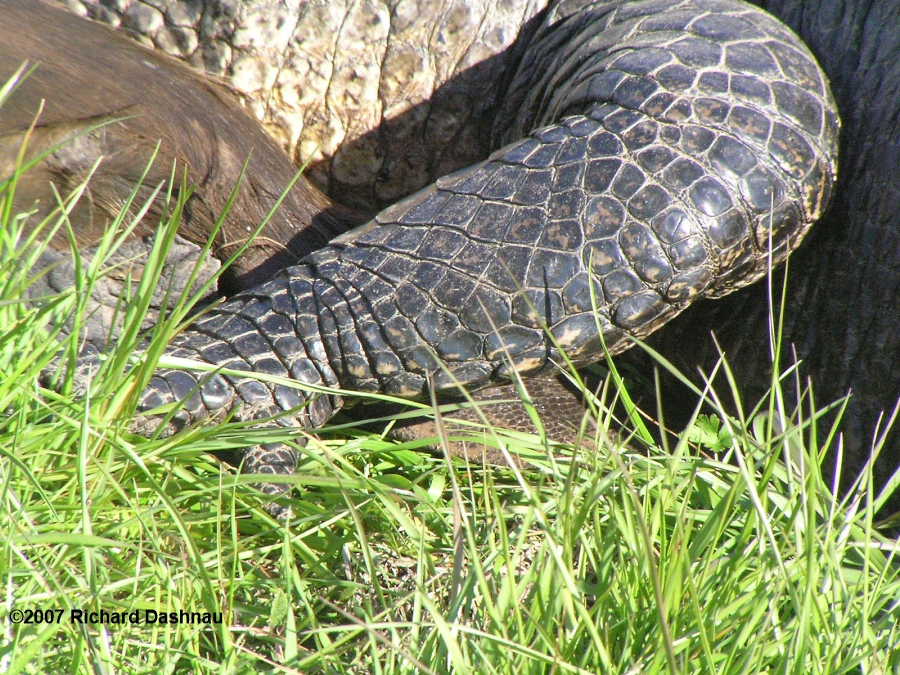 -
-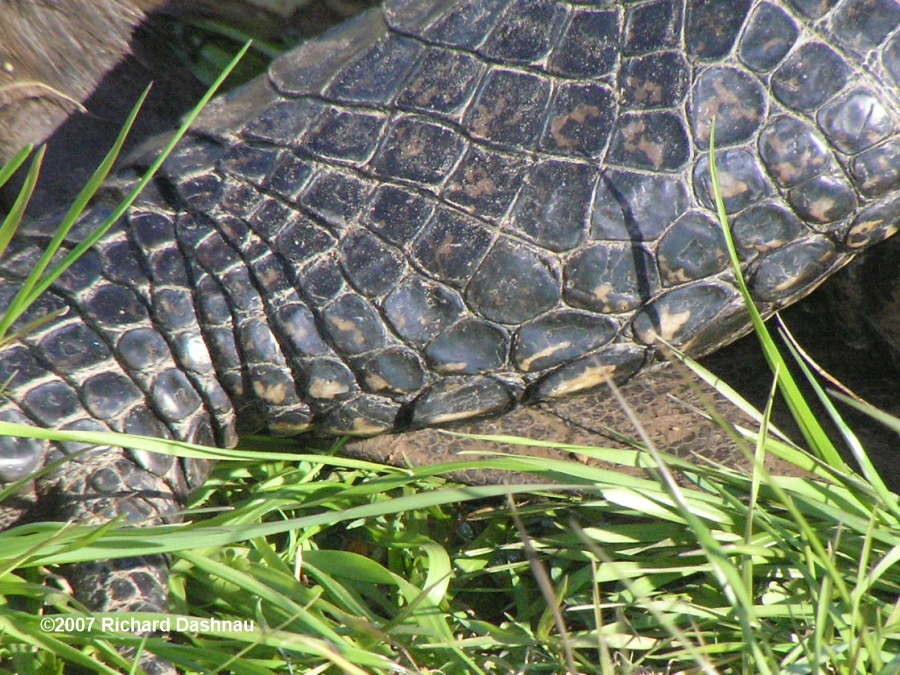 -
-
THE
MYSTERY
REVEALED
A BROAD, FLAT TAIL
THAT'S NO NUTRIA
A CLOSER LOOK AT THE TAIL
10/15/2006 (uploaded 1/29/2025)--I found this group of American Coots standing on
the 40 Acre Lake Trail. When I walked closer, the Coots didn't
move. I stepped a little closer, and
they still didn't move...until the entire flock suddenly
ran/flew (as Coots do) into the lake. I wondered why the Coots
seemed reluctant to move into the lake. And then I noticed
the
alligator in the water--holding the carcass of a Coot.
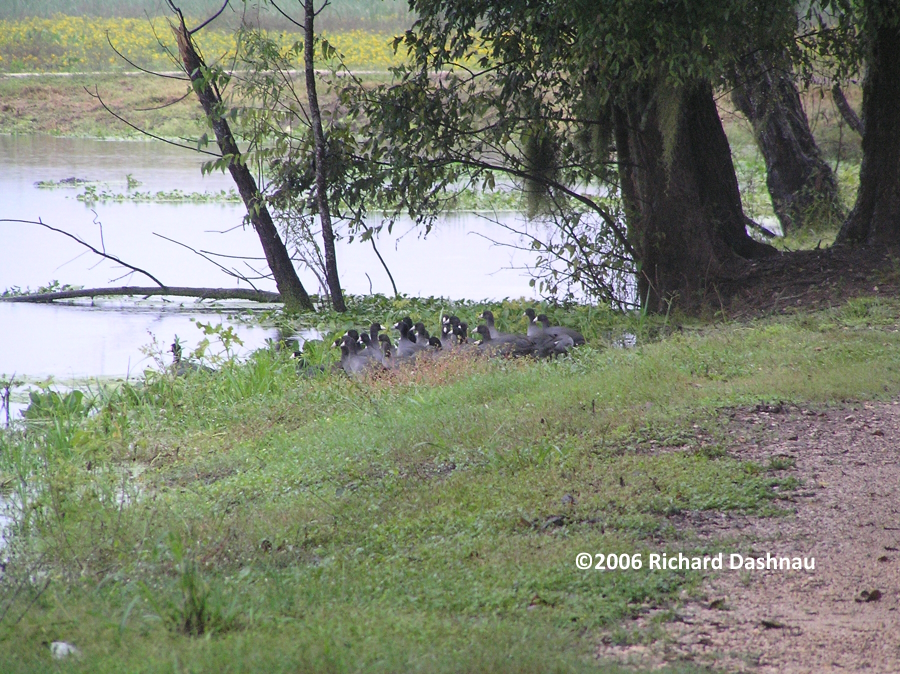 -
-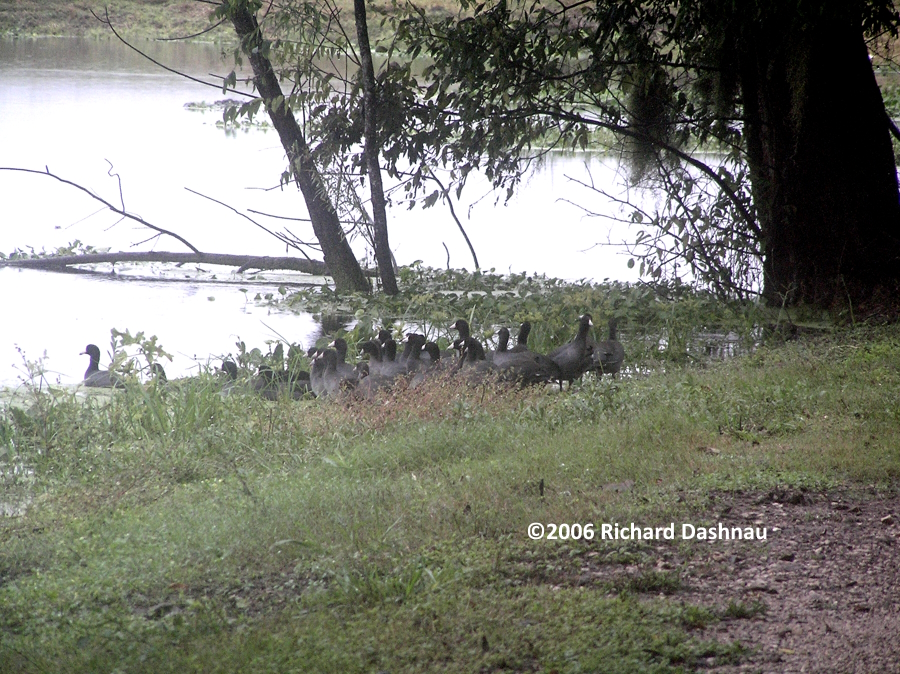 -
-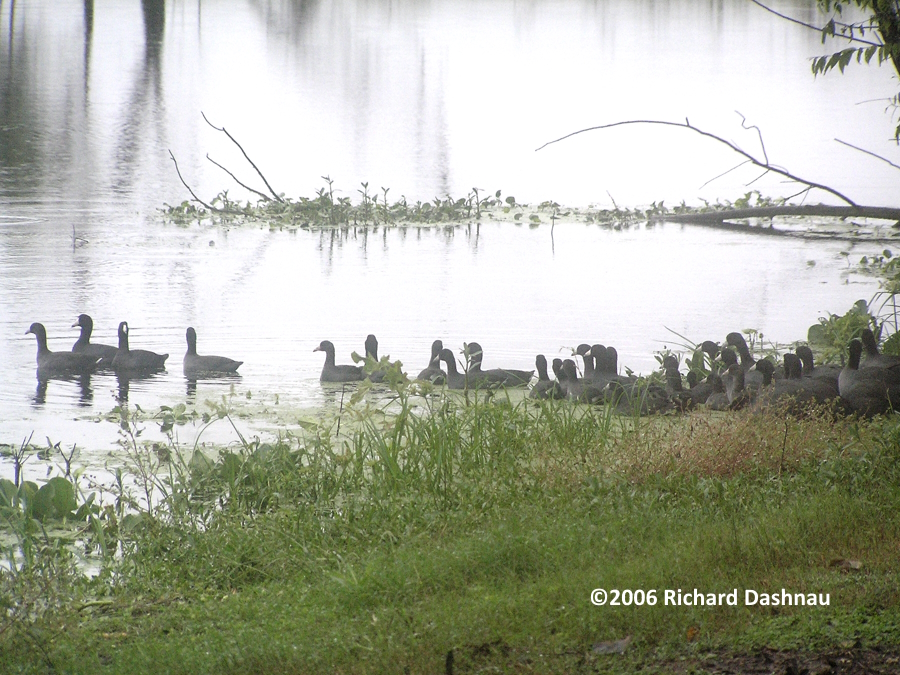 -
-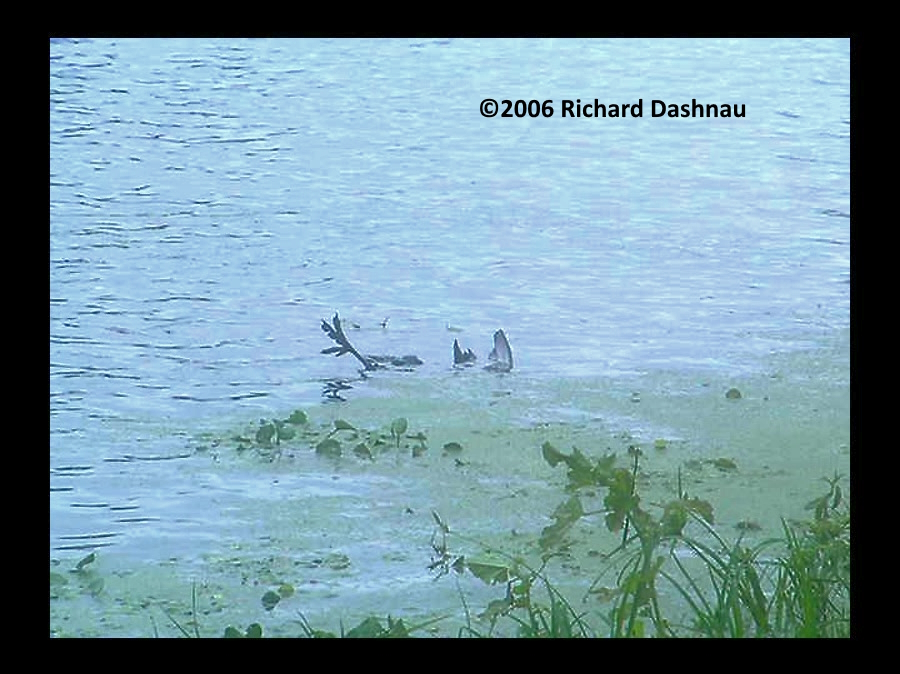 -
-
I took photos of the coots on the trail, but
didn't capture the flock splashing into the lake. I can't tell if
the Alligator had captured the bird before the flock moved;
or maybe grabbed one
as the crowd moved in.
 -
- -
- -
- -
-
I
walked past the alligator, then turned back to watch it for a
while. I didn't stay for long, since it had started raining, but I
captured some photos and video of it chewing on the Coot.
 -
- -
- -
- -
-
Starting some time in 2009 (I think), I'd started presenting my
first program about Alligator Behavior at BBSP. Over the
years, it evolved into my "It's Hard to Be An Alligator"
presentation. I'm mentioning this now, because although I'd been
using the photos and video from this event in the program for
years--I'd never included it on my website! So I'm
adding it today (1/29/2025). The original video was filmed at 640
x 480; at the time, that was the best digital video a camera
I could afford in 2006 would do.
I've done the best I can to make it larger, and you can see the edited video here.
 -
- -
- -
- -
-
5/28/2006--The water
level in the park is far below normal. I was near the Observation
Tower at 40-Acre lake, watching the large group of alligators
there. The receding water
level had driven most of
the prey to the remaining deeper water, and the corner near the
tower was one of these areas. One park visitor counted 50
alligators, which were cruising
about and occasionally
pouncing on prey (which I could almost never identify). Suddenly,
I heard a loud crunching sound, and I hurried over to the
alligator making the noise. The
images below shows what I
found. The alligator was chewing on a soda bottle. Not only did it
continue chewing on the bottle, but another alligator made a brief
attempt to steal it!
The owner of the
bottle left the water completely and--to my surprise--SWALLOWED
the bottle! The following pictures show this activity. Here is
also a short movie
clip
2.9MB
showing the alligator
chewing on the bottle. I was horrified to see this. After 5 years at the
park, I still can't believe the laziness and stupidity of some of
the park visitors. WHY
don't they throw
their garbage in its proper place...the garbage cans?
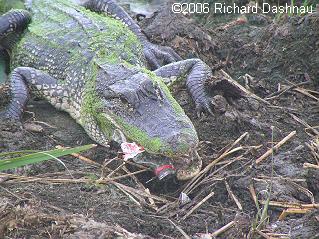 -
-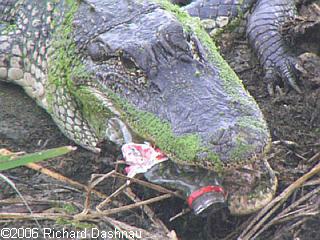 -
- -
-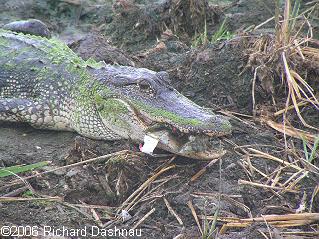 -
-
WELL, IT SOUNDED
TASTY
A LITTLE
CLOSER
EVEN
CLOSER
I'M TIRED OF
CHEWING THIS
-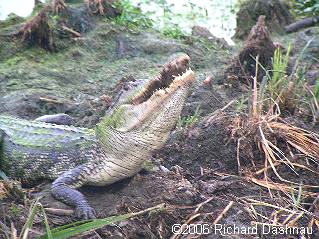 -
-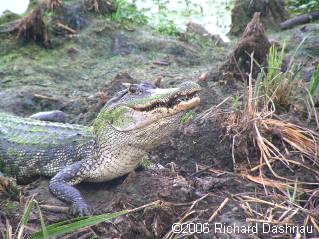 -
-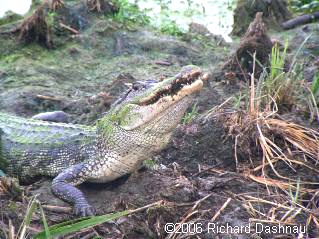 -
-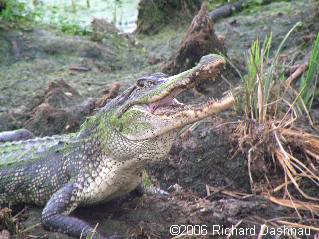
FIRST
TRY
DIDN'T GO DOWN
THIS TIME
IT WILL GO
A TOSS BACK
The series starting with
the 4th picture from the left above (TIRED OF CHEWING) shows the
final disposition of this non-food item. This was a small
alligator, about 4 feet long.
I wonder if this plastic bottle will have an adverse affect on the
alligator's alimentary canal. I also wonder if something like this
has been the cause of death for the dead alligators
what turn up occasionally.
-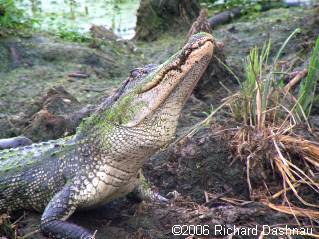 -
-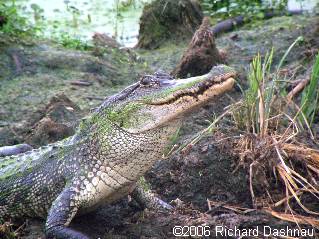 -
-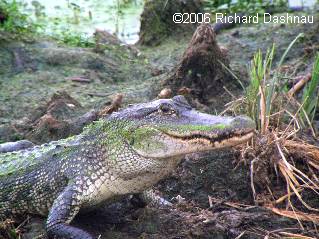 -
-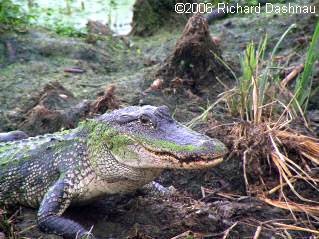 --
--
GULP!
AND NOW IT
GOES.....
...DOWN...
...THE HATCH.
The image below is an
animated gif of the final image sequence I show above. I built it
to repeat only 5 times, so if you don't see movement, refresh the
page.
-----------------------------------------------------
I really didn't expect the
alligator to continue chewing on this inert object, and I was
totally surprised that the alligator ate it. Last April (4/09/06),
I heard a loud crunching sound
near one of the fishing piers on Elm Lake. When I investigated, I
found an alligator with a plastic bottle, as shown below (see DO
GATORS DRINK). As shown in this movie
clip
1.9MB
,
that alligator let go of the bottle after just a few chews.
I expected this one to do the same.
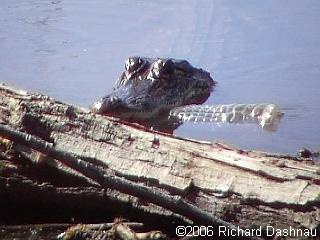 ----
---- ----
----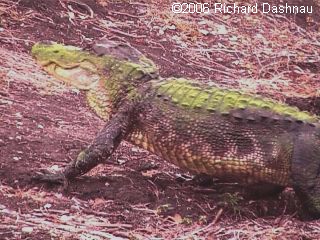 --
--
DO GATORS DRINK BOTTLED?
LOTS OF
ALLIGATORS
TOO MUCH NOISE, I'M
LEAVING
- -
-
USUAL WATER LEVEL
HE CONTINUES ACROSS
Returning to the morning I
originally was talking about, the next image above (LOTS OF
ALLIGATORS) shows just some of the clustered alligators.
This
short clip 3.3MB is a slow
pan across the alligators
that were nearest to me. There were many more. While the bottle
was being chewed up, the one large alligator that was in the
vicinity left the lake. The 3rd
image above (TOO
MUCH NOISE) is a frame from this movie
clip
5.0MB showing the alligator
walking up to the edge of the trail, where it stopped to rest. The
next image (USUAL
WATER LEVEL) is
another frame from the clip which I've marked to show where the
edge of the lake normally lies. This will give some idea of how
low the water level is. Finally,
the image above (HE
CONTINUES ACROSS) shows the alligator crossing the trail and
entering Pilant Slough. That image is from this movie
clip
5.2MB which shows the uncommon
view of an
alligator walking directly away from me. In the 5 years (or almost
5) that I've been at the park, I have been lucky enough to see
many alligators high-walking across
trails and fields. The
sight ALWAYS brings me enjoyment, and sometimes awe. I love seeing
the alligators!
Watching these large
reptiles lumbering over land sometimes reminds us of what the Age
of Reptiles might have been like. But it's interesting to note
that-- according to new discoveries
--we *do* have actual
dinosaurs in the park. However, they have feathers, wings, talons,
bills and beaks. Yes, they are the "avian dinosaurs"--birds.
January 01 and 08, 2006-- The winter has been quite mild here. At
Brazos Bend State Park (BBSP), we still haven't gotten enough rain
to bring up the water levels in the lakes to their
usual height. The mild weather has favored the alligators. Not
only that, but the alligators have been fairly active! The
alligator feeding on the nutria (described a few weeks ago) is
just
one example of various feeding events that have been witnessed
throughout the park this winter. On two Sundays in a row, I was
able to see alligators eating turtles. First, on January 1,
I saw an alligator in 40-Acre lake eating a small red-eared
slider. The first picture below (SMALL TURTLE CHOMP) shows one of
the alligator's early attempts to crush the turtle.
The alligator is about 8 feet long, and the turtle is about 4
inches long. The video clip is linked below the picture.
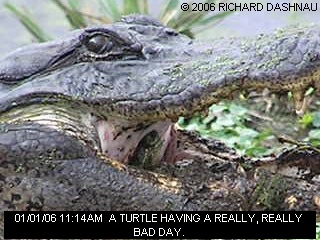 -
-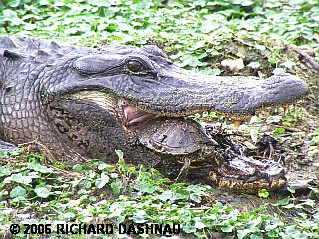 -
-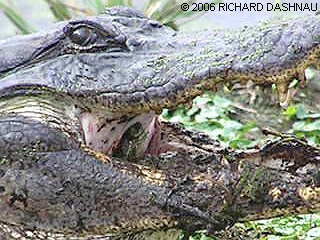 ---
---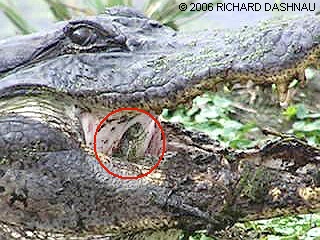 --
--
RICKUBISCAM SHOT
SMALL TURTLE CHOMP ----
REALLY BAD
DAY
THE
TURTLE, CIRCLED
FULL
CHEWING CLIP( WMV) 1371kb GULPING
DOWN
THE TURTLE WMV 4902kb - GULPING
SLOW
MOTION WMV 2527kb
As I was watching, the
alligator tossed the turtle a bit to reposition it. The turtle was
then held at the end of the alligator's jaws. As I prepared to
film the next movement, the alligator
tossed the turtle into the back of its throat, and swallowed it.
Today's RICKUBISCAM shot (above left) is a frame from a video clip
showing the small red-eared slider's last view of the
world. The image shows the slider peering out as the alligator is
swallowing it. This happens happens very quickly in the clip and
was only visible to me when I was reviewing the film frame
-by-frame. Two more view can be seen above (GOODBYE EVERYONE and
CIRCLED), and there are links to two video clips. The clips are
interesting because there is apparent movement
in the bottom jaw--like manipulation of a tongue--visible. It's
also apparent how the alligator uses gravity to help force food
down its throat. The slow motion clip also, of course, allows a
glimpse of the turtle as it is swallowed.
On January 8, I was watching some alligators near piers 4 and 5 on
Elm Lake. While I was watching and filming two alligators, another
one off to my left suddenly burst into motion. Of
course, I was filming the wrong alligators. I moved a few steps
closer, and set up the camera. I knew that if the alligator had
seized something that it would move to the nearest bank to eat
it. I was correct, and the alligator went to the island and
started tossing something. Through binoculars I could see that it
was a large turtle (this was a large alligator...at least 10 feet
long).
The island is a bit far for my still camera to capture
effectively, but I got a chance to try the zoom on my video
camera. The images below are frames from the video. The video
works
better than the stills, unfortunately, but the images give an idea
of what the clips show. This alligator took about 15 minutes to
catch and swallow the turtle. Alligators, although powerful,
seem to tire quickly, and will often rest for 5 to 30 minutes
between short bouts (about 1-2 minutes each) of prey squeezing or
shaking.
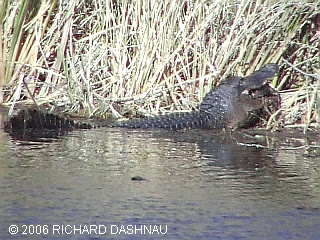 -
- --
--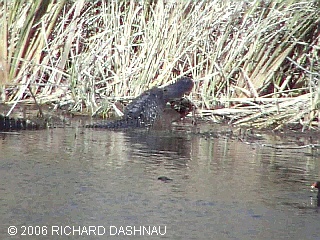 --
--
POSITIONED
CORRECTLY
CRUNCH!
FURTHER
REDUCING
IT'S GONE
TOSS
AND
CRUNCH WMV 6332kb
CRUNCH-SLOW
MO
WMV 4066kb
REDUCING
WMV
2722kb
SWALLOW WMV 2215kb
The first two images
(POSITIONED CORRECTLY and CRUNCH!) are from the first video clip
(links are under the pictures). There are a few interesting points
about the clip (as well as
the slow-motion version). First, is the volume of the sound of the
turtle shell. As I stated before, I was on the Elm Lake trail, and
the alligator was on the bank of one of the islands. I was
not straight across from the alligator, so I could film from the
side. I was, I estimate, about 50 yards away. The day was windy.
Yet, the video camera still picked up the sound of the shell
crunching. Second
is the power shown as the alligator bit cleanly though, breaking
the turtle in half. It's possible to see the bunching of the huge
jaw muscles as the alligator bites down.
The third image (FURTHER
REDUCING), is from the next clip, which shows the alligator
further preparing to finish its meal. Note the arched tail. I find
this interesting because it is
probably just a side effect of the effort of raising the head so
far. I know that the tail arch is a social signal, and I wonder if
this position says anything to other alligators. Would the
tail
arch alone convey any kind of message ("keep back", for instance),
or does the entire body position lend context to this? ("keep
back", but maybe "this alligator is feeding"--which is
unintentional because the tail arch isn't done "on purpose"?)
Also, he takes a slight rest after manipulating his prey with the
head raised out of the water; even though it seems that the prey
is positioned for swallowing.
The fourth image (DOWN IT
GOES) is from the last clip. This shows the prey being swallowed
and the high head lift necessary. The gravity feed is evident
again. Once the prey gets to a
certain point, the alligator seems to have to work it down by
tilting its head. When I give an alligator program,
sometimes I like to let the participants lift a part of large
alligator skull.
A large alligator skull is solid--for crushing strength--and
pretty heavy. It takes an effort to lift a 15-inch long skull and
swing it quickly from side to side. It isn't easy to hold it
tilted
with the snout up, or work the jaws, either. While I am not built
to manipulate an alligator skull, that doesn't lessen the fact
that this is a massive object that the alligator is moving around
--sometimes with amazing speed. This is NOT counting the
additional load caused by prey held in the jaws. Bearing that in
mind, it isn't surprising the the alligator requires many rest
periods
while manipulating or swallowing prey. The respiratory/circulatory
system that the alligator is also not conducive to long periods of
sustained activity.
I'm so pleased to be able to
observe these magnificent animals!
And, this
page shows alligators at the park, on land, near various landmarks
at the park.
Go back to my main alligator page, Alligators
Go back to my home page, Welcome
to rickubis.com
Go
to the main
alligator page
 -
- -
- -
- -
-
 -
- --
-- -
- -
- -
- -
-
 -
- -
- -
- -
- -
- -
- -
- -
- -
- --
-- -
- -
- -
- -
-  -
- -
- -
- -
- -
- -
- -
- -
- -
- -
- -
- -
- -
- -
- -
- -
- -
- -
- -
- -
- -
- -
- -
- -
-
 -
- -
- -
-
 -
- -
- -
- --
--

 ----
---- ----
---- --
--
 -
-
 -
- -
- ---
--- --
--
 -
- --
-- --
--